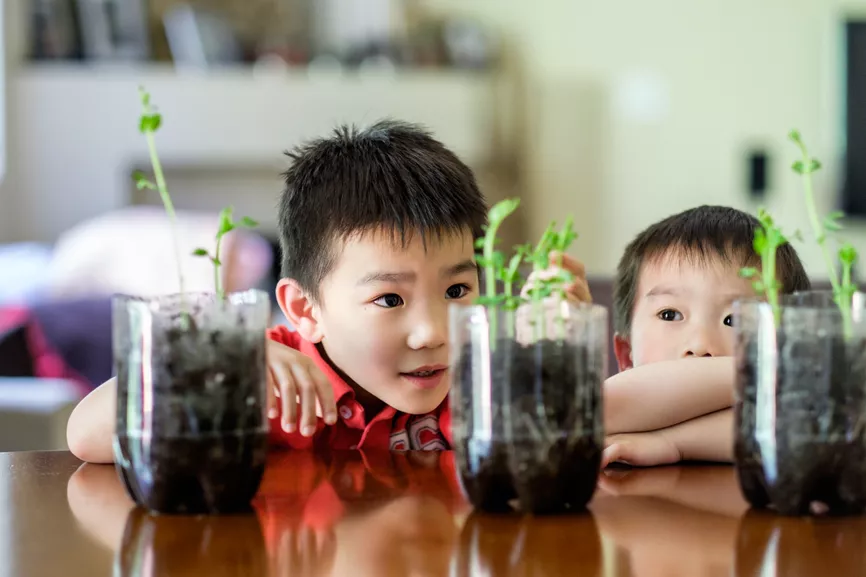I’m well aware that not all students will share my love for science. But a few years into my teaching career, I began to notice a pattern; I noticed that by the time students reached ninth grade, many decide whether or not they’re “good” at science. Those who think they’re not good tend to fall into the mindset that they’ll never understand, and subconsciously allow themselves to struggle through the course.
To combat this, I challenged myself to make my class more interactive in an attempt to push these students to engage with science in a different way. I use the following tactics to encourage all of my students to be curious about science:
Have Your Class Collaborate in Groups
I regularly organize my class into groups of four when reviewing class material for exams. I put whiteboards at each table for students to try each problem and collaborate as a group.
When I allowed my students to start working in groups, I noticed that they were less fearful to get an answer wrong within a group. They can talk within themselves, come up with a unified answer, put it on their board and then present it as a group.
Remove the Pressure of Grades
In certain group work such as an exam review, I structure the “grades” around participation rather than correct answers. When students present their answers, they receive points for trying even if the answer is wrong.
When the pressure of grades contingent on correct answers is removed, students are less stressed and are more likely to focus on the process, rather than just feel a need to memorize answers. In the weeks and days leading up to the exam, we discuss how to get to the right answers.
Alleviate “Test Anxiety”
Many of my students who think they’re “bad” at science also have test anxiety. I tell these students that I care more about their willingness to learn and understanding the process than if they get every answer correct on a test.
Once exam grades are distributed, I give my students two weeks to fix their mistakes. To get a percentage of the points back, they have to explain what they did wrong on the test and the process they took to get to the correct answer.
Create Unique, Interactive Labs
Because not every student is a confident test taker, I stress the aspects of my class that aren’t exams. Labs are a great opportunity to engage all students through unique, interesting experiments and content.
 When they start my class, most students are used to what I call “cookbook” labs, where you follow a list of directions that are extremely precise and prescriptive. To get students involved and engaged from the very beginning, I have them design some labs as a class. I want them to figure out steps to the end result, rather than just telling them how to get there. Allowing them to develop the content creates an understanding of why we’re doing a lab. Once we’ve completed the lab, we discuss what went right, what went wrong, and what we could have done differently.
When they start my class, most students are used to what I call “cookbook” labs, where you follow a list of directions that are extremely precise and prescriptive. To get students involved and engaged from the very beginning, I have them design some labs as a class. I want them to figure out steps to the end result, rather than just telling them how to get there. Allowing them to develop the content creates an understanding of why we’re doing a lab. Once we’ve completed the lab, we discuss what went right, what went wrong, and what we could have done differently.
With these strategies, I’m catering to all of my students, not just those who think they’re good at science. As educators, it’s our job to help build skills and confidence in all of our students.


